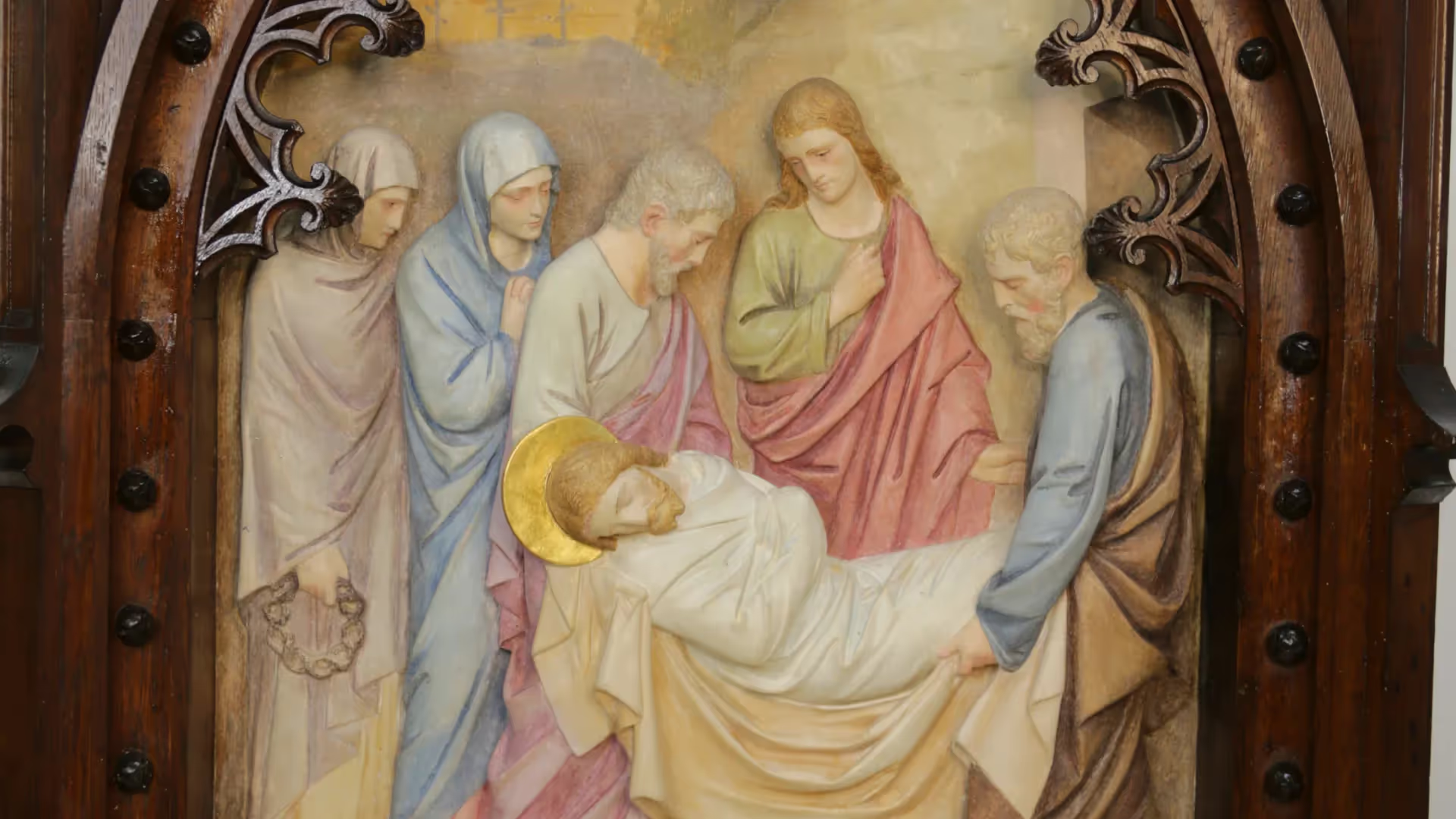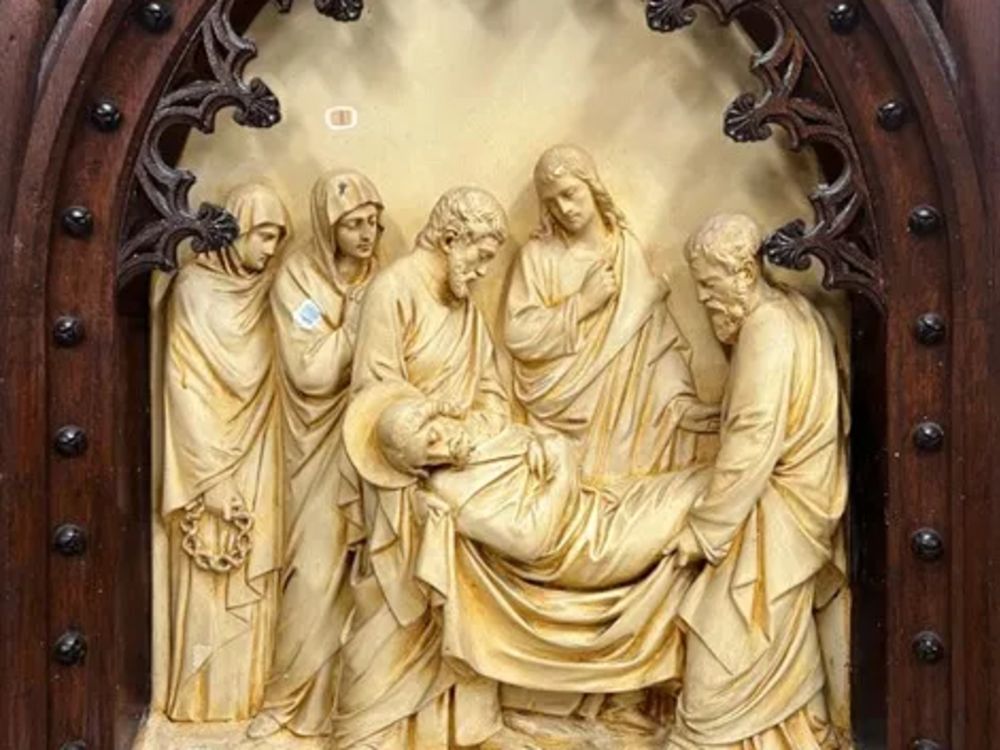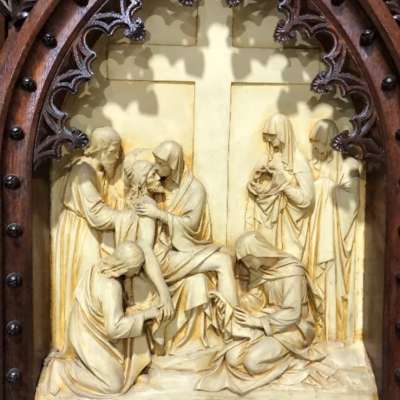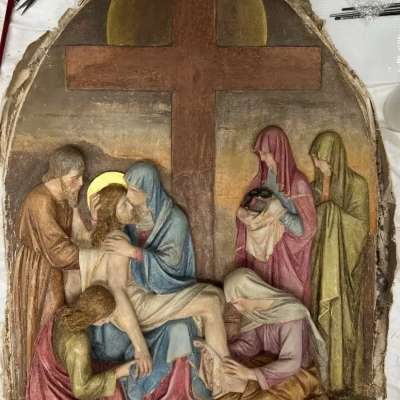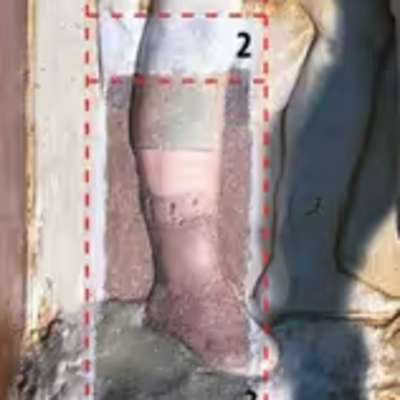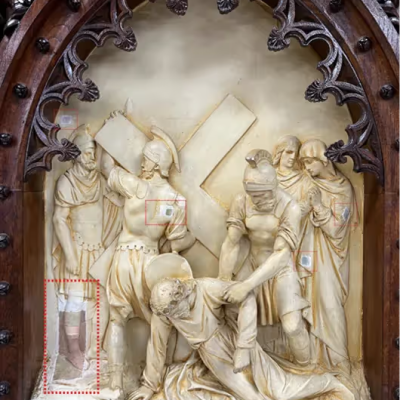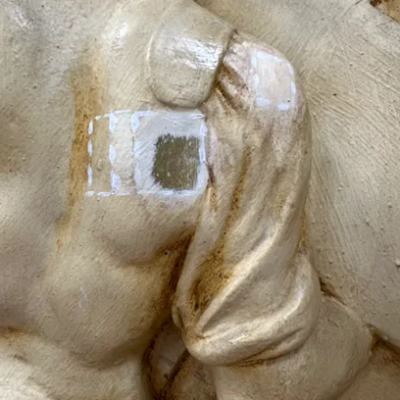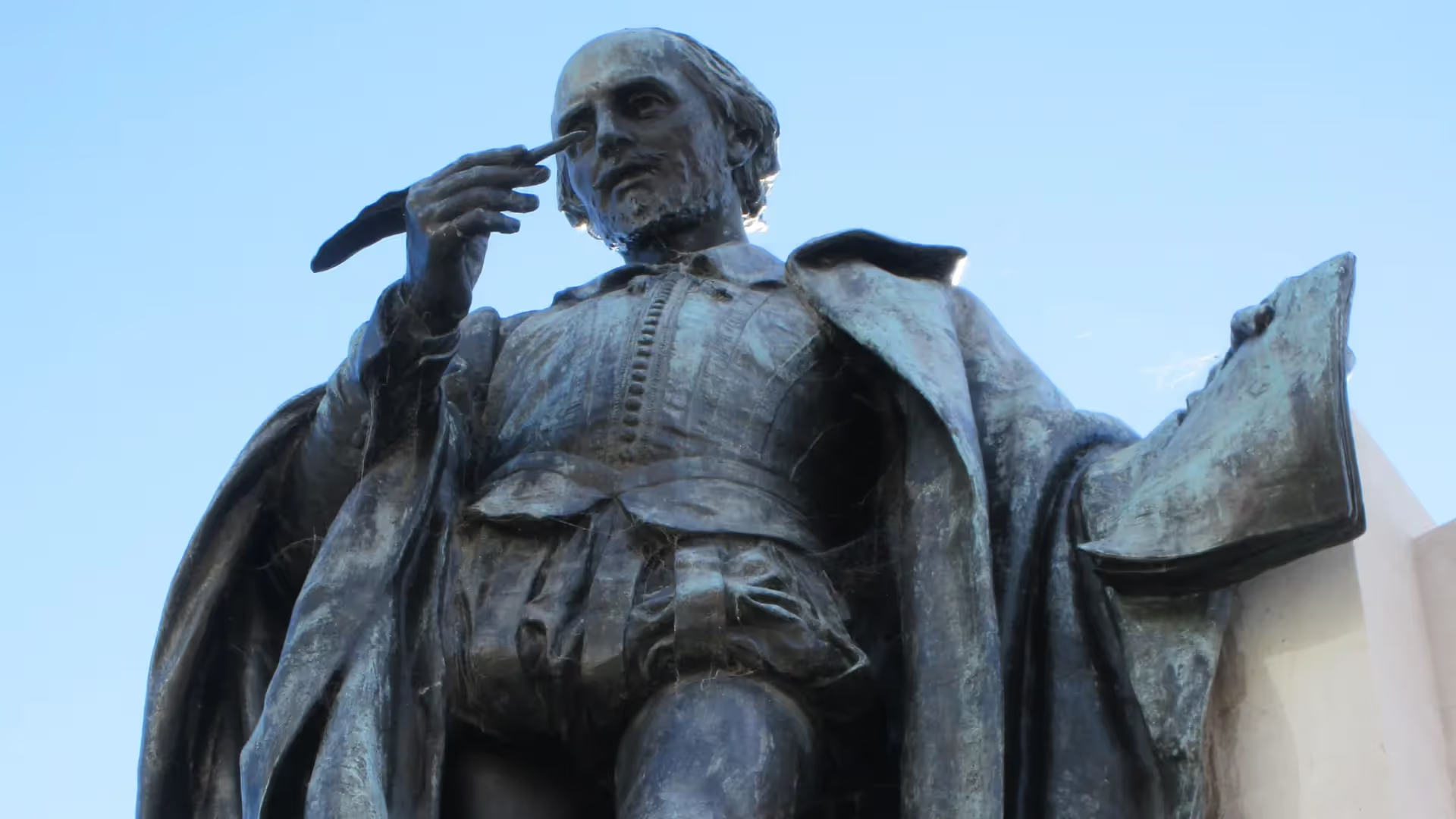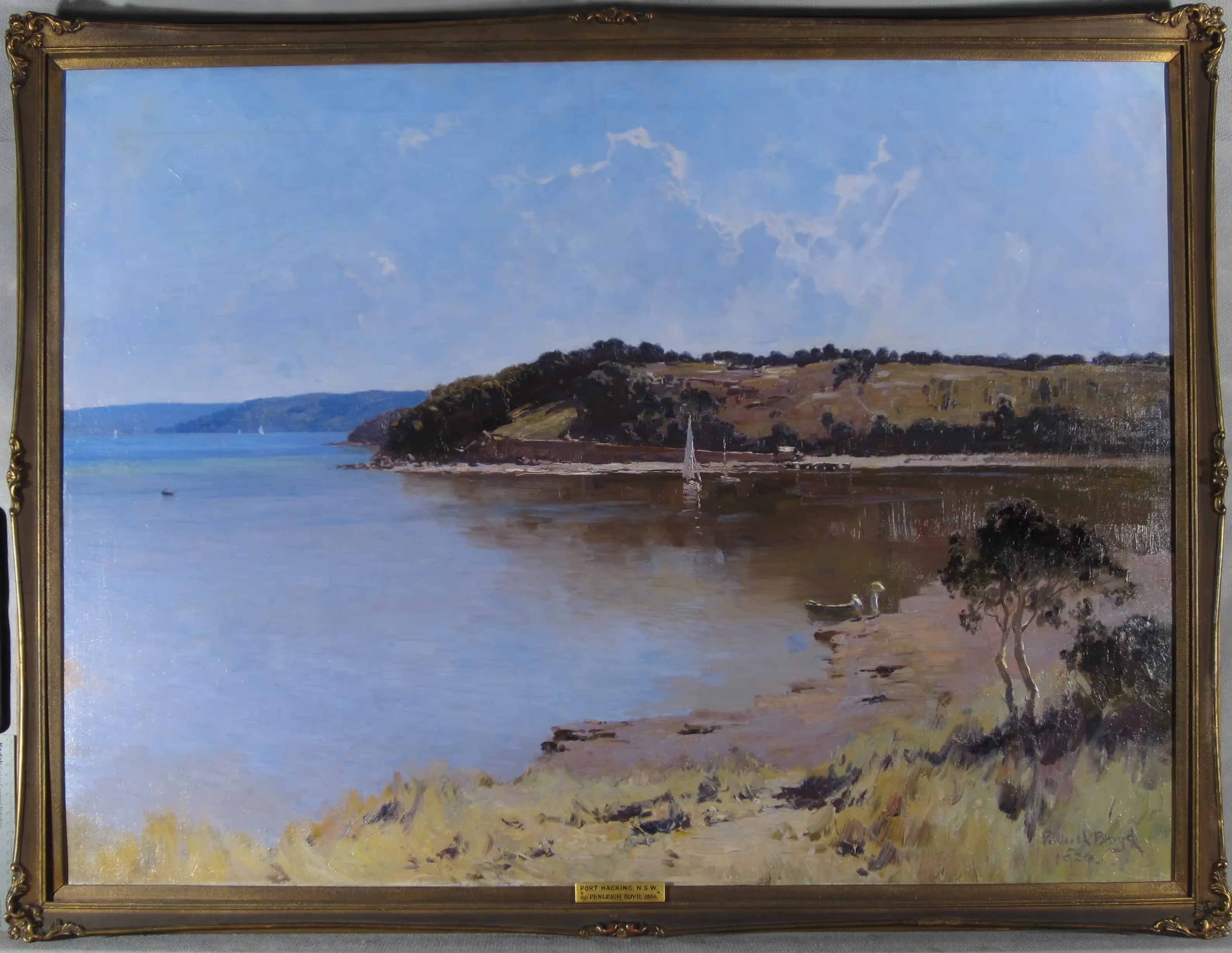Condition
ICS found each of the fourteen Stations to be in variable condition, structurally sound overall, with some areas of loss in the relief such as missing fingers, some superficial cracking to the plaster substrate and some detached fragments revealing the wire armatures inside.
There was extensive dust, grime and particulate soiling in the relief crevices, the varnish was yellowing, and the overpaint was separating from the plaster substrate which was beginning to remove the polychrome layers from the substrate. Areas of flaking and loss revealed the polychrome underneath.
The timber frames were structurally sound, but the varnish layers were deteriorated and covered in flecks of non-original paint.
Treatment
Surface Cleaning
The plaster relief sculptures were removed from their frames, and each of the fourteen sculptures were brush vacuumed to remove particulate soiling from the crevices, then cleaned to reduce the superficial grime.
Statigraphic testing and pigment analysis
To identify the original pictorial layers of the polychrome painted surface underneath the white overpaint, a series of stratigraphic tests were carried out. This was used to determine the chronological order of application of the original paint layers. The tests required removal of the white over paint using solvent solutions and gels. Tests revealed the original pigments underneath and the chronological order of the successive layers, which also included gilded areas. The pattern was revealed to be in line with the ecclesiastical protocol to utilise colour for representation.
Pigment analysis undertaken from Sydney Analytica confirmed the polychrome layers and pigment used in the original decorative colour scheme and backgrounds.
The tests also revealed that Jesus’ halo was painted in bole, a clay base used for gold leaf. Remnants of gold were visible under a microscope.
Removal of white overpaint
Results of the stratigraphic were used to establish a cleaning system to remove the white overpaint from each Station.
Solvents and gels were used to carefully solubilise the white paint and remove it from the polychrome surface underneath, taking great care to preserve the original decorative elements.
Treatment of original sculptures
The original paint layer was then stabilised so that infilling and inpainting could be safely conducted on damaged areas.
Structural repairs to restore the plaster losses were undertaken. The armatures were stabilised, and the areas of loss were filled and sculptured to match the original.
Jesus’ halo was re-gilded using 23.5 gold leaf.
Treatment of the frames
The original oak cases for the Stations were treated by reducing the old varnish, removing the flecks of paint, and treating the timber with French polish and wax.
The cases were then ready to be reinstalled onto the plaster relief Stations using the original methods: layers of plaster and fibres. Finally, the original backing board was reattached using dowls.
Outcome
After more than 12 months of meticulous conservation, enabled through fundraising by the community of St Peter and Paul’s Cathedral, a huge community celebration and High Mass was held in November 2022 to commemorate the reopening of this beautiful cathedral.
The entire project was shortlisted in the 2023 NSW Heritage Trust Awards, and ICS was proud to be highly commended in the Conservation – Interiors and Objects category for its transformative work on the Stations of the Cross.
Before treatment
After treatment
